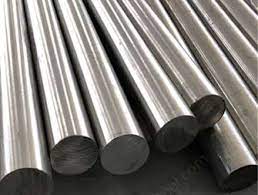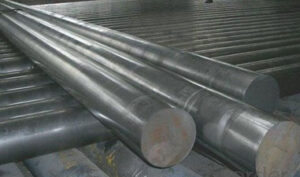Stainless steel has earned its reputation as a versatile and durable material suitable for various applications across numerous industries. Among the various stainless steel alloys, 316 stainless steel round bars hold a unique position due to their exceptional properties. In this in-depth exploration, we will delve into the industries that benefit most from the use of 316 stainless steel round bars.
Understanding 316 Stainless Steel
Before we dive into the industries, let’s establish a solid understanding of 316 stainless steel, its composition, and its key properties.
Composition and Alloying Elements
316 stainless steel is classified as an austenitic stainless steel alloy, characterized by its well-balanced composition of essential elements:
- Chromium (Cr): Provides resistance to corrosion by forming a protective oxide layer.
- Nickel (Ni): Enhances corrosion resistance, especially in acidic environments.
- Molybdenum (Mo): Improves resistance to pitting corrosion.
- Iron (Fe): The base metal contributing to its strength and durability.
- Other Trace Elements: Including carbon, silicon, and manganese, which influence specific properties.
Corrosion Resistance
The outstanding feature of 316 stainless steel is its exceptional corrosion resistance. It can withstand harsh environments, including exposure to saltwater, acids, and chemicals, making it ideal for various industries.
High Temperature Performance
316 stainless steel retains its mechanical properties at elevated temperatures, making it a reliable choice for applications involving heat and thermal stress.
Strength and Durability
These round bars are known for their impressive tensile strength and durability, which enable them to withstand heavy loads and challenging conditions.
Industries that Benefit from 316 Stainless Steel Round Bars
Now, let’s explore the industries where 316 stainless steel round bars play a pivotal role, thanks to their unique properties.
1. Marine Industry
Applications:
- Ship fittings
- Marine hardware
- Boat propellers
- Offshore platforms
- Fishing equipment
Reasons for Use:
The marine industry heavily relies on 316 stainless steel due to its unrivaled corrosion resistance in saltwater environments. It ensures the longevity and reliability of critical components and structures in ships and offshore installations.
2. Chemical Processing
Applications:
- Chemical reactors
- Pipelines
- Storage tanks
- Pumps and valves
Reasons for Use:
In the chemical processing industry, where exposure to corrosive chemicals is commonplace, 316 stainless steel is a top choice. Its resistance to acids, alkalis, and chemicals ensures the integrity of equipment and infrastructure.
3. Food and Pharmaceutical Industries
Applications:
- Food processing equipment
- Pharmaceutical machinery
- Biotechnology apparatus
- Sterilization equipment
Reasons for Use:
Hygiene and corrosion resistance are paramount in these industries. 316 stainless steel’s non-reactive nature, ease of cleaning, and durability make it an ideal material for ensuring product quality and safety.
4. Construction and Architecture
Applications:
- Structural components
- Handrails and balustrades
- Architectural features
- Building facades
Reasons for Use:
In construction and architecture, aesthetics and durability are critical. 316 stainless steel’s attractive finish, coupled with its strength and resistance to weathering, makes it a preferred choice for modern building designs.
5. Aerospace and Defense
Applications:
- Aircraft components
- Military hardware
- Aerospace fasteners
- Weapon systems
Reasons for Use:
In aerospace and defense applications, where lightweight materials and high-strength alloys are essential, 316 stainless steel is used for its combination of strength, corrosion resistance, and heat resistance.
6. Oil and Gas
Applications:
- Oil rigs and platforms
- Pipeline construction
- Wellhead equipment
- Valves and fittings
Reasons for Use:
The oil and gas industry demands materials that can withstand harsh offshore environments. 316 stainless steel’s corrosion resistance and durability make it valuable for ensuring the integrity of equipment.
FAQ
Q1: Is 316 stainless steel magnetic?
No, 316 stainless steel is typically non-magnetic in its annealed state. However, it may exhibit some slight magnetic properties after cold working or fabrication processes.
Q2: Can 316 stainless steel round bars be welded?
Yes, 316 stainless steel can be welded using standard welding techniques. However, it’s important to use low-carbon filler materials to prevent sensitization and maintain corrosion resistance.
Q3: What makes 316 stainless steel round bars suitable for marine environments?
316 stainless steel’s high chromium and molybdenum content provide excellent corrosion resistance, making it an ideal choice for marine applications where exposure to saltwater is prevalent.
Q4: Are there any limitations to using 316 stainless steel in high-temperature applications?
While 316 stainless steel performs well at elevated temperatures, it may not be suitable for extremely high-temperature applications (above 900°C or 1652°F), where specialized alloys with higher temperature resistance may be required.
In conclusion, the versatility and exceptional properties of 316 stainless steel round bars make them invaluable across a wide range of industries. Whether it’s ensuring the structural integrity of a building, the safety of food and pharmaceutical products, or the reliability of equipment in harsh environments, 316 stainless steel plays a vital role in countless applications, contributing to the advancement and sustainability of various industries.


